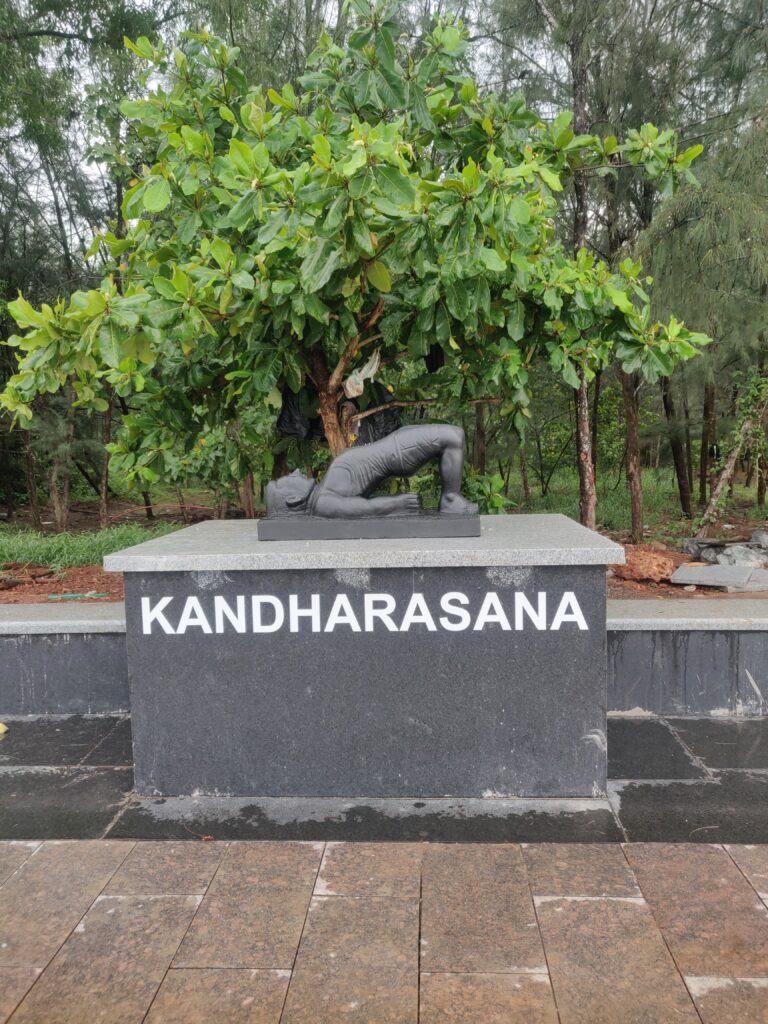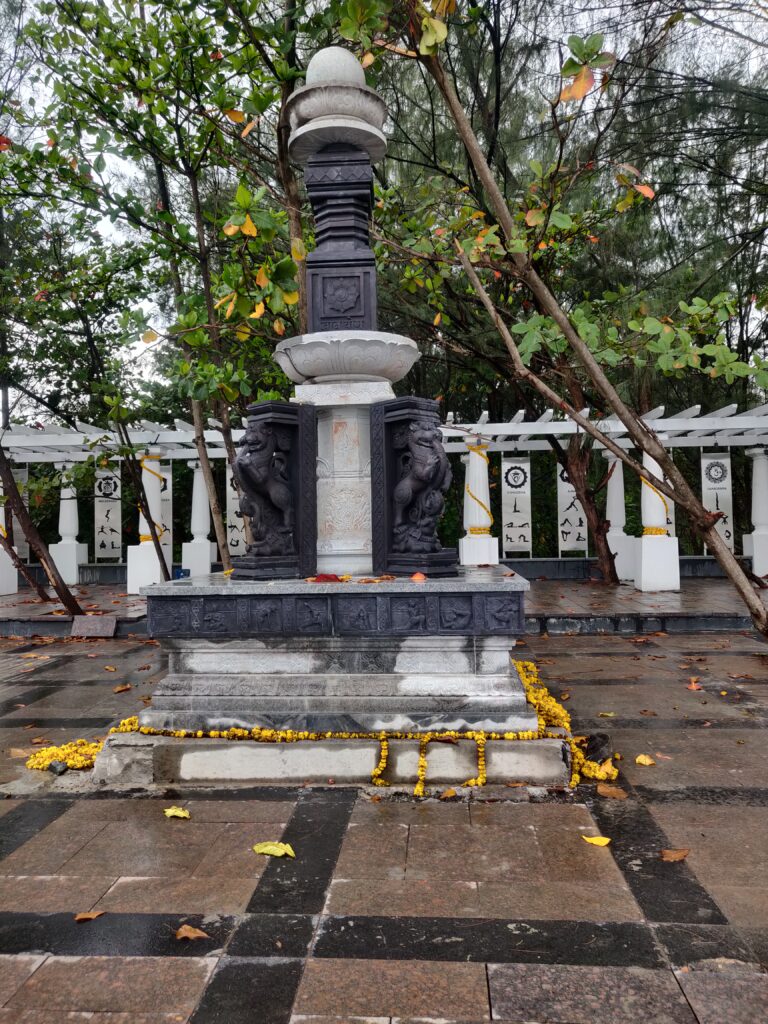The Yog Setu and the A magnificent statue of Lord Parshuram statue stands tall, radiating divinity, along the newly developed walkway-cum-cycle track at Mandovi Riverfront near Bhagwan Mahavir Bal Vihar Park in Campal, Panjim have become iconic landmarks, inspiring locals and visitors alike.
Table of Contents
Yoga Setu aka Yog Setu
Fostering Wellness and Harmony The Yog Setu, meaning Yoga Bridge, stands as a symbol of holistic well-being. Spanning across the serene Mandovi River, it serves as a pathway for individuals to connect with the ancient practice of yoga. The bridge not only provides a scenic passage but also offers a tranquil space for yoga enthusiasts to engage in their practice, promoting physical and mental harmony.



Lord Parshuram Statue
Adjacent to the Yoga Setu the statue is strategically placed along the beautiful Mandovi Riverfront, near Bhagwan Mahavir Bal Vihar Park, a magnificent statue of Lord Parshuram stands tall, radiating divine energy. Lord Parshuram, believed to be the sixth incarnation of Lord Vishnu, represents strength, valor, and righteousness. The intricately crafted statue captures the essence of Lord Parshuram’s devotion and eternal teachings, serving as a source of inspiration for spiritual seekers.
The Idea Behind the statue
The notion of erecting a majestic Bhagwan Parshuram statue in Panaji was born as a mark of respect to this revered deity and a symbol of fostering religious harmony and cultural inclusiveness. The statue’s underlying vision is to exemplify the harmony amid diversity that characterizes Goa and its inhabitants. It stands as a testament to the state’s cultural legacy, emphasizing its dedication to safeguard and commemorate its vibrant history.
Goa Formation
According to Hindu mythology, the state of Goa was created by Lord Parshuram. It is said that Lord Parshuram, in an act of divine creation, shot an arrow into the sea, commanding it to recede. The waters obeyed, revealing the lush land of Goa, ready to embrace the enchanting beauty that it is known for today. Thus, Goa emerged from the depths of the Arabian Sea, bearing the divine mark of Lord Parshuram’s mighty arrow, and forever entwining its history with myth and mystique.
Cultural Significance and Symbolism
The presence of the Yog Setu and Parshuram Statue holds immense cultural significance in Panaji. They symbolize the city’s commitment to preserving its rich heritage and promoting a harmonious lifestyle. These landmarks represent the fusion of ancient traditions with modern aspirations, inviting individuals to embrace a balanced and spiritually fulfilling life.
Promoting Yoga and Well-being
The Yog Setu not only serves as a physical bridge but also bridges the gap between traditional wisdom and contemporary lifestyles. It serves as a reminder of the importance of incorporating yoga and mindfulness practices into our daily lives. The bridge encourages people to engage in yoga, fostering physical fitness, mental clarity, and emotional well-being.
The Yog Setu and Parshuram Statue have become points of attraction, drawing both tourists and locals. Visitors can experience the serenity of the surroundings while connecting with their inner selves through yoga and contemplation. The statuesque presence of Lord Parshuram inspires reverence, providing a space for prayer, introspection, and seeking spiritual solace.
Conclusion
The Yog Setu and Parshuram Statue in Panaji, Goa, embody the essence of spiritual connection and cultural heritage. The Yoga Setu bridges the gap between physical and spiritual well-being, inviting individuals to embrace the practice of yoga. The majestic Parshuram Statue serves as a symbol of devotion, inspiring visitors and locals alike. Together, these landmarks create an environment that fosters a harmonious lifestyle and preserves the rich traditions of Goa. Before ending do check the video link of the statue. Do check our article on newest temple in Goa. Birla Radha Krishna Temple Goa


One comment